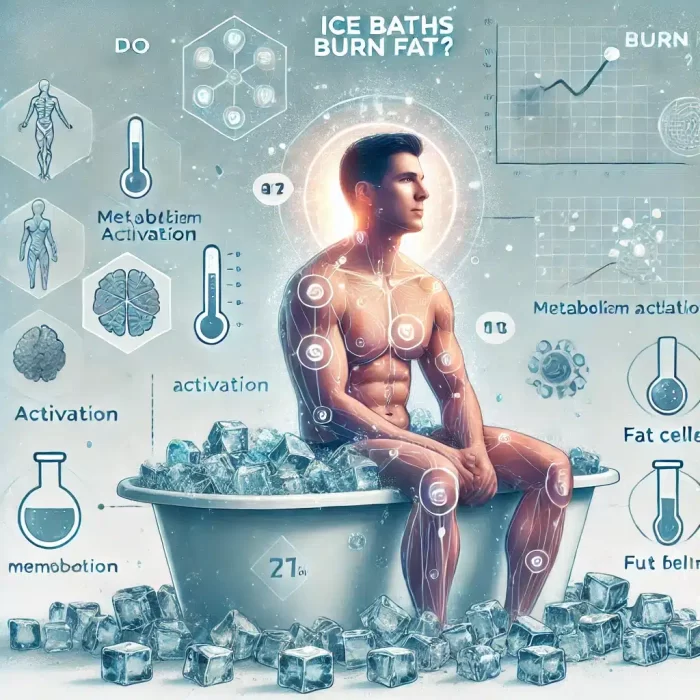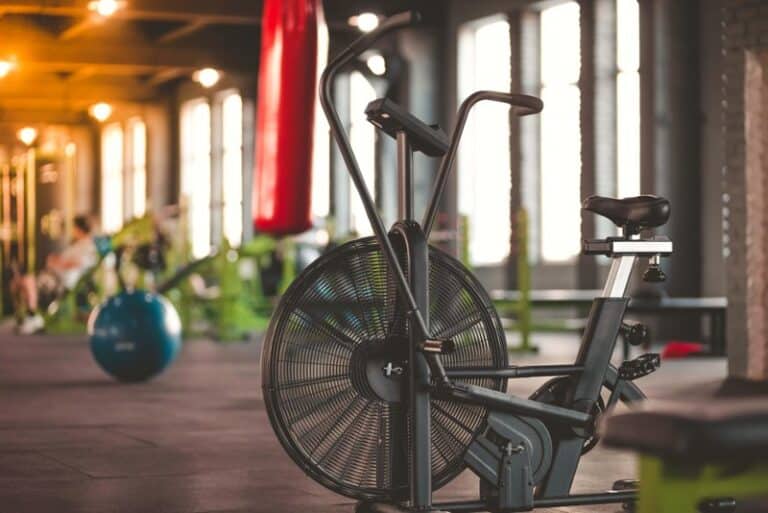Do Ice Baths Burn Fat? The Science, Benefits, and Myths Explained
In circles of fitness and well-being, ice baths have grown to be a hot—or cold—subject. While some sportsmen and celebrities say they help burn fat, many swear by them for recuperation. Though the idea of employing cold exposure for weight loss is interesting, is there actual scientific support for it or is it another fitness myth?
The human body is meant to control temperature automatically. Extreme cold causes several mechanisms to keep warm, some of which entail burning calories. This has prompted studies on whether cold therapy—including ice baths—can be utilized as a respectable method for weight loss.
We shall explore in great detail the science underlying ice baths, their impact on metabolism, and if they help to burn fat in this post. We will also discuss their extra health advantages, safe use techniques, and what the most recent studies reveal about their influence.
What Is an Ice Bath?
Usually between 50-59°F or 10-15°C, an ice bath—also called cold water immersion—is submerging your body in ice-cold water for a designated five to fifteen minute time. Sports medicine and recovery therapies have seen the idea used extensively over centuries of history. Many sportsmen take ice baths to help improve circulation, reduce muscular tightness, and expedite recovery after intense activity.
Beyond physical recovery, though, ice baths have drawn interest because of their potential to increase metabolism and boost fat burning. This argument results from the way the body responds to intense colds, more notably, from the triggers of brown adipose tissue (BAT), commonly known as brown fat.
Unlike white fat, brown fat generates heat instead of storing calories. Studies on cold temperature exposure have shown that it can increase brown fat activity, increase calorie expenditure, and perhaps lead to fat loss.
One fascinating Harvard Medical School study has found that lower body fat percentages and improved metabolism are associated with higher degrees of active brown fat. Another study reported in The Journal of Clinical Investigation showed that cold exposure greatly increased brown fat activation, hence increasing energy use.
Although the studies on brown fat activation show promising results, the question of whether ice baths provide enough cold exposure to noticeably influence fat loss remains unresolved. Allow us to probe this more.
The Science Behind Ice Baths and Fat Burning
Thermogenesis—the process by which the body generates heat—helps one to understand why ice baths burn fat. Relevant two forms of thermogenesis for this issue are:
- Shivering Thermogenesis: Your body shivers in response to cold temperatures to produce heat, therefore burning calories.
- The body burns calories from brown fat (brown adipose tissue, or BAT), which keeps the body warm using heat generation.
Unlike white fat, which stores extra calories, brown fat burns energy rather than accumulating it. While adults still have tiny amounts largely in the neck and upper back, babies have enough brown fat to assist them control body temperature.
Exposing humans to low temperatures for two hours a day over six weeks resulted in an increase in brown fat activity and a slight decrease in total fat mass, according a 2014 study written for The New England Journal of Medicine.
Higher brown fat levels were also linked in a study in Nature Medicine to improved blood sugar control and reduced obesity risk. This implies that although the effects are not as strong as conventional approaches like diet and exercise, cold exposure can affect metabolism and weight control.
Therefore, even if ice baths help to burn fat, they should not be used as the main weight reduction aid.
Do Ice Baths Burn Fat?
Although ice baths boost thermogenesis-mediated calorie burning, their relative fat burning value is somewhat low when compared to conventional approaches like diet and exercise.
Studies indicate that cold exposure can somewhat increase energy expenditure, but not in a way that would greatly affect long-term fat reduction. According to a study written in The Journal of Clinical Investigation, cold exposure turned brown fat on active and roughly raised metabolism by 15%. Although this is encouraging, it does not equal a significant fat loss breakthrough.
Another study revealed that, but only in combination with other fat-burning techniques like regular exercise and a balanced diet, constant exposure to cold temperatures over time may help to somewhat lower fat mass. Ice baths are not a substitute for traditional weight loss techniques; rather, they may have a modest impact in calorie burning.
Practically speaking, the caloric expenditure from one ice bath session is negligible—that of a brisk stroll. Therefore, even if ice baths help to burn calories generally, their effect on weight loss is significantly less important than keeping a calorie deficit with a sensible diet and frequent exercise.
Having said that, ice baths have several advantages beyond only helping with fat loss like better circulation, more mental resilience, and faster muscle recovery. Although they could be a terrific addition to your regimen if you enjoy ice baths and find them helpful, they shouldn’t be your main method of weight loss.
Other Health Benefits of Ice Baths
Ice baths have several other advantages that might support general health and fitness even if they might not be a direct fat-burning shortcut:
1. Muscle Recovery and Reduced Inflammation
The capacity of ice baths to lower muscle soreness and inflammation following exercises is among their main advantages. Faster healing and reduced muscle soreness can result from the cold constricting blood vessels, therefore lowering swelling and clearing out metabolic waste. Regular cold water immersion athletes showed noticeably less muscular discomfort than non-regular cold water immersion athletes, according to a study reported in The American Journal of Sports Medicine.
2. Increased Circulation and Heart Health
By constricting blood vessels and then dilating them after the body warms up, cold exposure can increase circulation. This process—known as vasodilation—may improve general cardiovascular condition. Studies published in The Journal of Applied Physiology indicate that consistent cold temperature exposure can boost blood flow and lower cardiovascular disease risk.
3. Boosted Immune System
Regular cold temperature exposure, according to some research, may boost white blood cell production, thereby strengthening the immune system. Regular cold shower users reported fewer sick days and milder cold symptoms than non-regular users, according to a study by Dutch researchers.
4. Enhanced Mental Toughness and Stress Reduction
Sitting in ice-cold water calls for mental fortitude and discipline as well as tenacity. With time, this approach can assist increase emotional resilience and stress management. Dopamine and norepinephrine, neurotransmitters known to improve mood and lower stress, have been connected to cold exposure. According to a study written for Medical Hypotheses, cold treatment might ease anxiety and depression symptoms.
5. Improved Sleep Quality
Furthermore encouraged by cold water immersion is improved sleep. Deeper and more peaceful sleep cycles result from the dip in core body temperature that follows an ice bath reflecting the body’s natural cooling mechanism before sleep. Research in The Journal of Sleep Research claims that pre-bed cold exposure helps encourage faster sleep onset and improved sleep quality.
6. Potential Metabolic Benefits
Although ice baths have only minor fat-burning effects, activating brown fat might have long-term metabolic advantages. Cold exposure may, some studies suggest, help to increase insulin sensitivity and metabolic health. Regular cold exposure, according to a Diabetes paper, enhanced insulin action and glucose metabolism in those at type 2 diabetes risk.
How to Safely Take an Ice Bath?

Although ice baths have many advantages, improper use of them could lead to hypothermia, too strong system shock, and even cardiovascular stress. This is why one should approach them tactically and safely.
1. Start Slow
If you have never been exposed to cold, avoid plunging right into an ice bath. Initially, spend a few minutes each day cold showering to allow your body to progressively adjust to the shock of cold water.
2. Set the Right Temperature
Though not dangerously so, an ice bath should be frigid. The range of optimal temperatures is 50–59°F (10–15°C). Any cooler, and you might run more of a chance for shock or nerve-related problems.
3. Limit Your Time
Start novices with five to ten minutes. More experienced people could be able to withstand up to 15 minutes, but anything more runs the danger of too much cold exposure. Pay attention to your body; if you feel uneasy, step away.
4. Control Your Breathing
Control of your respiratory reaction is one of the toughest difficulties of an ice bath. Natural cold exposure sets up quick, shallow breathing. To assist your body relax and reduce shock, concentrate on deep, leisurely breaths and exhales.
5. Keep Your Core Warm
Should full-body immersion seem too intense, you can keep your upper body out of the water and concentrate on sinking just your legs or lower torso. Wearing a thick hat or sweater will also assist your body hold some heat and let you enjoy the bath.
6. Warm Up Gradually Afterward
Once you leave, fight the want to get right into a hot shower. Rather, naturally warm up by moving about, changing into dry clothing, and drinking warm tea. This lets your body progressively come to normal temperature.
7. Avoid Ice Baths If You Have Certain Health Conditions
See a doctor first if you have nerve problems, circulation problems, or heart diseases before trying ice baths. Not everyone would find it safe if sudden cold exposure strains the cardiovascular system.
Are Ice Baths Worth It for Fat Loss?
Do ice baths therefore really aid in fat loss? The response is no as well as yes.
1. They Can Increase Calorie Burning, But Not Drastically
Brown fat, which burns calories to generate heat, is triggered by ice baths—a process sometimes referred to as non-shivering thermogenesis. Cold exposure can raise metabolic rate by about 15%, according to a study in The Journal of Clinical Investigation. Though this might help create a modest calorie deficit, it is not enough on its own to induce notable weight reduction.
2. They Work Best When Combined with Diet and Exercise
Although ice baths might somewhat increase metabolism, their effects are small when compared to a well-organized exercise program and diet. If your main objective is fat loss, concentrate on strength training, cardio, and a calorie deficit; then, utilize ice baths as a rehabilitation tool, not a substitute for exercise.
3. They May Help Reduce Cortisol and Improve Recovery
Because of increased cortisol levels, chronic stress can cause weight gain—especially around the waist. Cold exposure lowers cortisol levels, according to a study in PLoS One, which helps the body better control stress and so indirectly supports fat reduction.
4. They Promote Better Sleep, Which Affects Weight Loss
Control of weight depends critically on sleep. Bad sleep can throw off hunger hormones and cause one to crave unhealthy meals more. Deep, peaceful sleep has been demonstrated by ice baths, which might encourage a better metabolism. Participants in a cold-exposure-before-bed study from The Journal of Sleep Research reported better quality of sleep and less interruption of their sleep.
5. They Can Enhance Mental Toughness, Keeping You Committed to Fitness
Just as much about consistency and discipline as it is about diet and exercise is weight loss. Regular ice baths call for mental fortitude, which can translate into other spheres of exercise to keep you inspired to follow your training plan and choose better foods.
Final Thoughts: So, Do Ice Baths Burn Fat?
Do ice baths therefore really burn fat? Indeed, but not in the dramatic manner you might have imagined.
Although cold baths can help brown fat activate and somewhat boost calorie burn, they are not a shortcut to weight loss. They are most effective when seen in context—that of a larger picture, aiding your recuperation, lowering inflammation, and increasing mental resilience. These advantages enable you to eat better, keep regular with your training, and over time sustain better habits.
Stated differently, ice baths help your body recover faster and operate better, so facilitating a somewhat easier procedure even if they won’t melt fat on their own. When it comes to fat loss, consistency, dedication, and a well-rounded strategy remain very vital.
Therefore, if you already dedicate yourself to your workouts and diet, an ice bath could be the healing aid you need to have an advantage. Remember, though, that meaningful, long-lasting benefits depend on combining smart training, a healthy diet, and rest.






